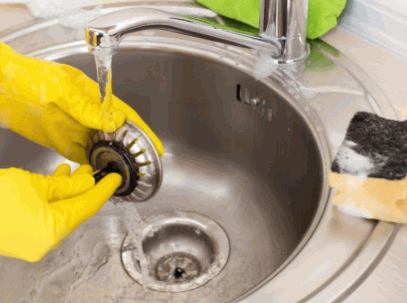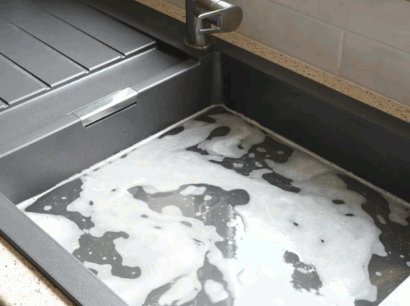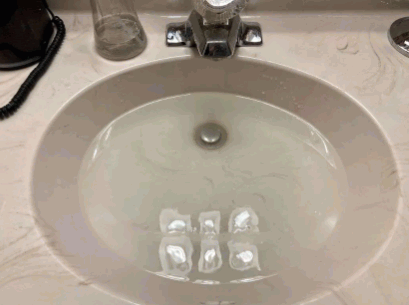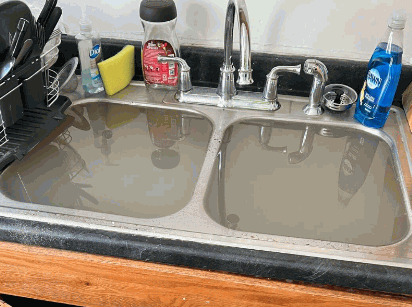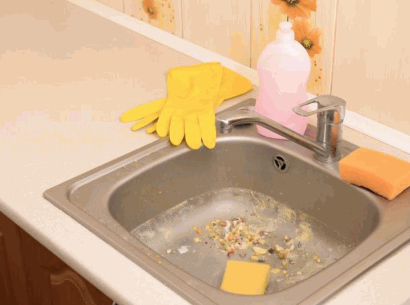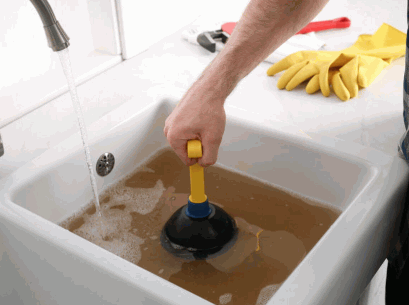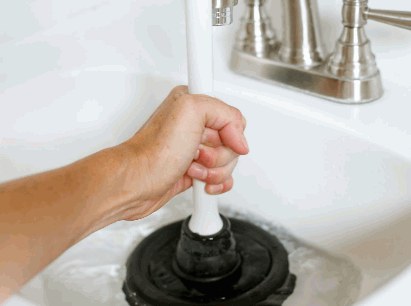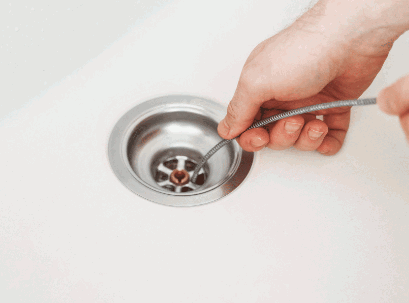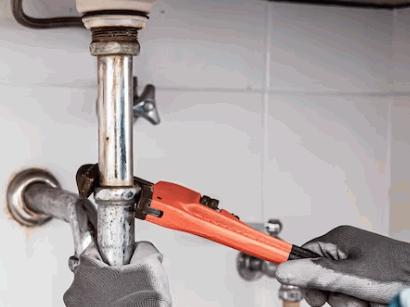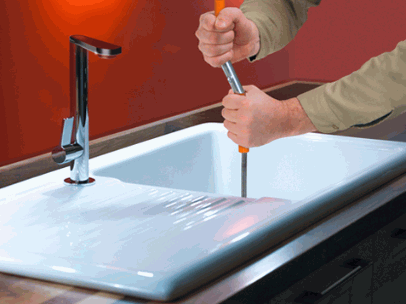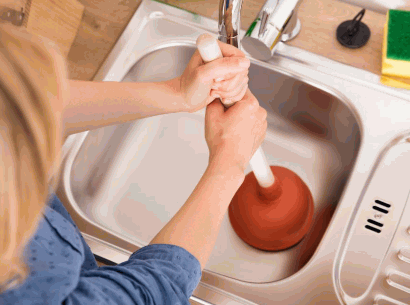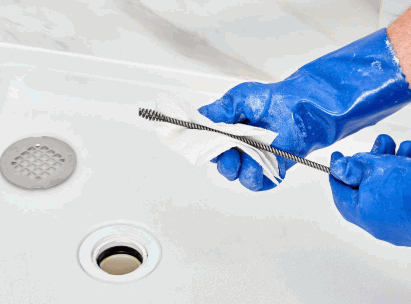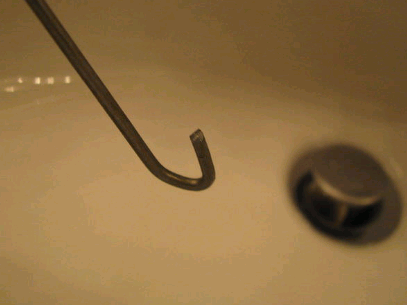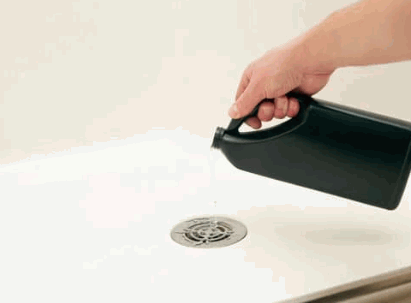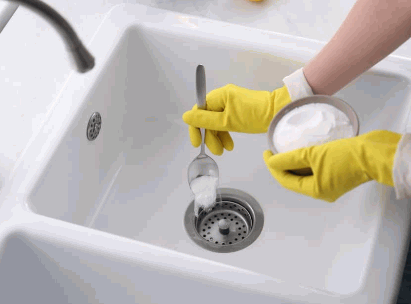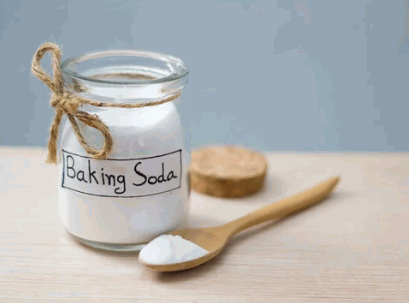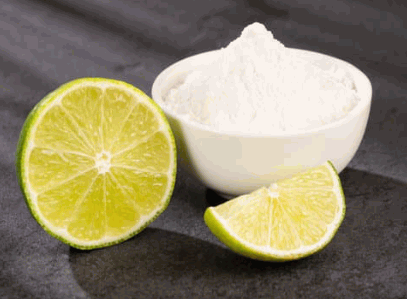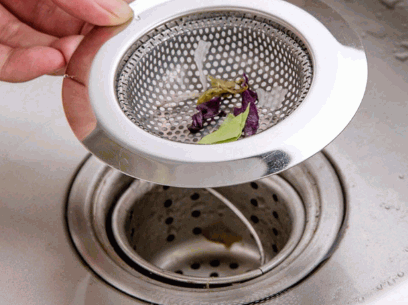Are you tired of dealing with clogged drains in your sink? Don't worry, you're not alone. A clogged drain can be a major inconvenience and can even lead to bigger plumbing problems. In this article, we will share some simple steps on how to effectively clean your drain and prevent future clogs. Say goodbye to frustration and hello to a clean sink!
Why Do Drains Get Clogged?
Drains can become clogged for a variety of reasons. The accumulation of food particles, grease, hair, soap scum, and mineral build-up are all common culprits that can lead to blockages. In addition, external factors like tree roots, aging pipes, and improper disposal of non-flushable items can also contribute to clogged drains.
By understanding the reasons behind clogged drains, proactive measures can be taken to prevent blockages, such as:
- Regular cleaning
- Proper waste disposal
- Avoiding pouring oil or grease down the drain
Delve into: How To Clean Drain In Shower
What Are The Signs Of A Clogged Drain?
The signs of a clogged drain include:
These indicators can help prevent more severe plumbing issues, so it is important to pay attention to them and address any potential blockages promptly.
How To Prevent Clogged Drains?
- To prevent clogs, avoid pouring grease or oil down the drain.
- Install a drain guard to catch hair and other debris.
- Regularly flush drains with hot water to prevent buildup.
- Use a natural mixture of vinegar and baking soda to clean and deodorize drains.
- For maintenance and prevention of clogs, consider using enzyme-based cleaners monthly.
What Are The Tools Needed To Clean A Drain?
To effectively clean a drain, you will require a specific set of tools. These tools include:
- A plunger for removing minor clogs.
- A drain snake for tackling tougher blockages.
- A pipe wrench for dismantling the pipe if necessary.
- Additionally, a drain auger can be helpful for dealing with deep clogs.
How To Clean A Drain Manually?
When it comes to maintaining a clean and functional kitchen or bathroom, clearing a clogged drain is an essential task. While there are many methods and products available for this task, sometimes a more hands-on approach is needed. In this section, we will discuss the three most common ways to manually clean a drain: using a plunger, a drain snake, or a bent wire hanger. Each method has its own unique benefits and can be effective in different situations. So, let’s dive in and learn how to clean a drain manually.
1. Use A Plunger
- Insert the plunger into the clogged drain.
- Ensure the plunger covers the entire drain opening.
- Push the plunger up and down with force to dislodge the clog.
- Continue plunging until the water starts draining smoothly.
- Repeat the process if necessary.
2. Use A Drain Snake
- Put on gloves and eye protection.
- Insert the drain snake into the drain until you feel resistance.
- Crank the handle to dislodge the clog.
- Slowly pull the snake out to remove the blockage.
- Repeat the process if necessary.
Pro-tip: After using the drain snake, run hot water through the drain to flush out any remaining debris.
3. Use A Bent Wire Hanger
- Straighten the hanger: Unwind the wire hanger, making sure it is long and straight.
- Create a hook: Bend one end of the hanger to form a small hook, which will be useful for grabbing debris.
- Insert and maneuver: Carefully insert the wire hanger into the drain, angling and twisting it to reach and dislodge any blockages.
- Withdraw and clean: Gently pull out the hanger, removing any debris caught on the hook.
- Flush with hot water: After successfully clearing the clog, run hot water to ensure the drain is completely clear.
How To Clean A Drain With Chemicals?
When it comes to unclogging a sink drain, there are various methods you can try. One popular approach is using chemical drain cleaners, which can effectively dissolve blockages and clear the drain. In this section, we will discuss the different chemical drain cleaners available and how to use them properly. We will also explore alternative methods such as using baking soda and vinegar or a mixture of salt and baking soda as natural and less harsh options for cleaning a drain.
1. Use A Chemical Drain Cleaner
- Take necessary precautions and wear protective gear such as gloves and safety goggles.
- Thoroughly read and follow the instructions on the label of the chemical drain cleaner.
- Carefully pour the recommended amount of the cleaner into the drain.
- Allow the cleaner to work for the specified amount of time.
- Flush the drain with plenty of water to remove the cleaner and any debris.
- Dispose of any remaining cleaner as instructed on the label.
2. Use Baking Soda And Vinegar
- To start, pour a pot of boiling water down the drain to loosen up any debris.
- Next, pour 1/2 cup of baking soda down the drain, followed by 1/2 cup of vinegar. Cover the drain to let the mixture fizz for a few minutes.
- Finally, flush the mixture with another pot of boiling water to clear the residue.
Fun Fact: The combination of baking soda and vinegar creates a bubbling reaction that helps break down and dislodge clogs in the drain.
3. Use Salt And Baking Soda
To use salt and baking soda to clean a drain, follow these steps:
- Pour 1/2 cup of salt and 1/2 cup of baking soda down the drain.
- Let the mixture sit for several hours or overnight.
- Rinse the drain with boiling water.
For optimal results, repeat this process regularly to maintain clean drains.
What Are The Natural Ways To Clean A Drain?
Clogged drains are a common household problem that can be solved without harsh chemicals or expensive tools. In this section, we will discuss some natural and environmentally friendly ways to clean a drain. From using boiling water to a combination of baking soda and lemon juice, these methods are simple and effective in clearing out debris and buildup in your sink's drain. So, let's dive into the three natural ways to clean a drain and say goodbye to clogs.
1. Use Boiling Water
- Boiling water is a natural and effective method for unclogging drains.
- To begin, heat a pot of water until it is boiling vigorously.
- Then, slowly and cautiously pour the boiling water down the drain in 2-3 stages, giving it a few seconds to work between each pour.
- Finally, run hot water to see if the clog has been cleared.
2. Use Baking Soda And Lemon Juice
- Remove visible debris from the drain.
- Use baking soda and lemon juice by pouring 1/2 cup of baking soda down the drain and following it with 1 cup of lemon juice.
- Let the mixture sit for an hour.
- Flush the drain with boiling water.
- Repeat if necessary.
3. Use Salt And Baking Soda
- Remove standing water from the clogged drain.
- Pour 1/2 cup of baking soda into the drain and add a pinch of salt.
- Follow with a mixture of 1 cup of vinegar and 1 cup of hot water.
- Cover the drain with a plug to contain the fizzing reaction.
- Let it sit for 15-30 minutes.
- Flush the drain with boiling water.
How To Maintain Clean Drains?
Clogged drains can cause major inconvenience and even damage to your plumbing system. That's why it's important to maintain clean drains to prevent any blockages from occurring. In this section, we'll discuss some simple but effective methods for keeping your drains clean and clear. From using a drain strainer to avoid debris buildup, to regularly flushing with hot water, to using enzyme-based cleaners, we'll cover all the steps you need to take to maintain clean and healthy drains. Plus, we'll also share a crucial tip on what not to pour down your drain to avoid clogs.
1. Use A Drain Strainer
- Use a drain strainer to prevent debris from entering the drain.
- Be sure to regularly clean the drain strainer to ensure it functions properly.
- Dispose of any collected debris from the strainer to avoid clogging.
2. Regularly Flush With Hot Water
- Regularly flushing drains with hot water helps prevent clogs by clearing away accumulated grease and soap residue.
- To follow this method, start by boiling a pot of water. Then, slowly pour it down the drain, allowing the hot water to dislodge any buildup.
- Make sure to repeat this process at least once a week to maintain clean and clear drains.
3. Use Enzyme-Based Cleaners
- Purchase an enzyme-based drain cleaner from a hardware or home improvement store.
- Pour the recommended amount of cleaner down the drain, usually overnight for best results.
- Rinse the drain with hot water to remove any remaining debris and cleaning solution.
4. Avoid Pouring Grease And Oil Down The Drain
- Use a strainer to catch food particles and solid grease, preventing them from entering the drain.
- Collect cooking grease and oil in a container and dispose of it in the trash, not down the drain.
- Wipe greasy pans and pots with a paper towel before washing to minimize grease entering the drain.
